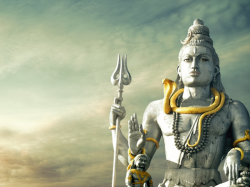Mahashivratri 2019: Know history, significance and how to celebrate this important Hindu festival
Mahashivratri 2019: Maha Shivaratri is a Hindu festival celebrated in India annually in honour of Lord Shiva. Know more!

Maha Shivratri is a Hindu festival celebrated every year in reverence of Lord Shiva. It is also known as Padmarajarathri. Shivaratri literally means the great night of Shiva or the night of Shiva. It is celebrated every year on the 13th night/14th day of the Maagha or Phalguna month of the Hindu calendar.
Celebrated in the dark fortnight or Krishna Paksha of the month of Maagha according to the Shalivahana or Gujarati Vikrama or Phalguna according to the Vikrama era.
Mahashivratri 2019: History
According to the Puranas, during the great mythical churning of the ocean called Samudra Manthan, a pot of poison emerged from the ocean. The gods and the demons were terrified as it could destroy the entire world. When they ran to Shiva for help, he in order to protect the world, drank the deadly poison but held it in his throat instead of swallowing it. This turned his throat blue, and since then he came to be known as 'Nilkantha', the blue-throated one.
Mahashivratri 2019: Significance
Shivratri is considered especially auspicious for women. Married women pray for the well being of their husbands and sons, while unmarried women pray for an ideal husband like Shiva, who is the spouse of Kali, Parvati and Durga.
But generally, it is believed that anyone who utters the name of Shiva during Shivratri with pure devotion is freed from all sins. He or she reaches the abode of Shiva and is liberated from the cycle of birth and death.
Mahashivratri 2019: Celebration
On the day of Shivratri, a three-tiered platform is built around a fire. The topmost plank represents 'swargaloka' (heaven), the middle one 'antarikshaloka' (space) and the bottom one 'bhuloka' (earth).
Eleven 'kalash' or urns, are kept on the 'swargaloka' plank symbolizing the 11 manifestations of the 'Rudra' or destructive Shiva. These are decorated with the leaves of 'bilva' or 'bael' (Aegle marmelos) and mango atop a coconut representing the head of Shiva. The uncut shank of the coconut symbolizes his tangled hair and the three spots on the fruit Shiva's three eyes.
The phallus symbol representing Shiva is called the lingam. It is usually made of granite, soapstone, quartz, marble or metal, and has a 'yoni' or vagina as its base representing the union of organs.
Devotees circumambulate the lingam and worship it throughout the night. It is bathed every three hours with the 5 sacred offerings of a cow, called the 'panchagavya' - milk, sour milk, urine, butter and dung. Then the 5 foods of immortality - milk, clarified butter, curd, honey and sugar are placed before the lingam. Dhatura fruit and flower, though poisonous, are believed to be sacred to Shiva and thus offered to him. The fast is broken only the next morning, after the nightlong worship.
For all the latest Lifestyle updates, check out our Facebook page!